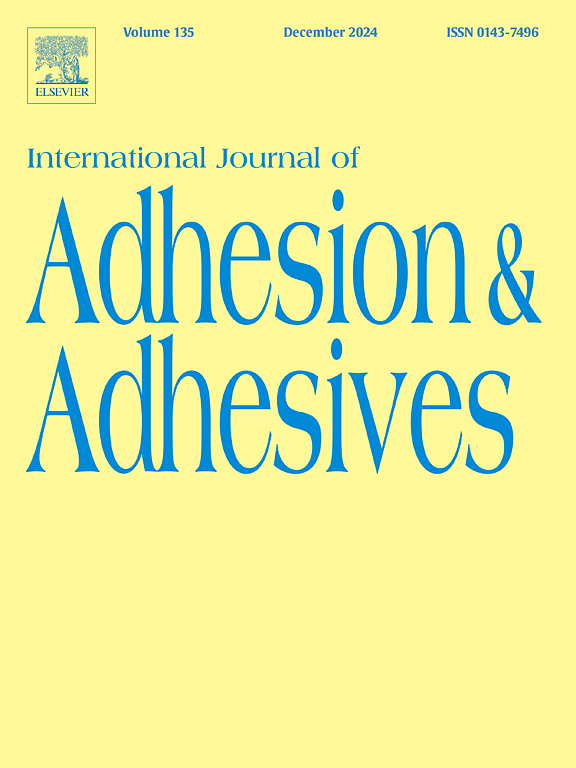Polymer-based anti-adhesive barriers: A comprehensive overview of current approaches for medical and biological applications
IF 3.5
3区 材料科学
Q2 ENGINEERING, CHEMICAL
International Journal of Adhesion and Adhesives
Pub Date : 2025-07-09
DOI:10.1016/j.ijadhadh.2025.104096
引用次数: 0
Abstract
Tissue and cell adhesions are undesirable conditions observed after surgical operations. This adhesion is seen at a high rate in many patients after the surgical operation. It is especially observed in biological parts such as the abdominal cavity, thoracic cavity, and tendons. Due to the healing of the fibrous tissues in the wound after the surgery, this part causes adhesion in the surrounding tissues and organs, and patients may develop complications such as chronic pain, intestinal obstruction and functional obstruction of organs after adhesion, may require a repeat surgical operation, and is a serious problem that may cause infertility in women. Chronic pain, intestinal obstruction, and functional obstruction of organs may develop complications after adhesion. To prevent this situation, it is very important to develop barriers with higher biocompatibility, low cost, easily applicable, and synthesizable instead of existing anti-adhesive barriers. Potential candidates with these properties are thought to be polymers. Polymers offer many options for use as anti-adhesive barriers since they can be obtained from natural sources and synthetically. These options can be designed according to the characteristics of the anti-adhesive barriers desired to be synthesized. These polymers can be produced in a short time using very simple techniques in the forms of hydrogel, membrane, fiber, film, etc. In addition to these, these polymers synthesized as anti-adhesive membranes can act as simultaneous drug release and imaging agents in various combinations. In this article, medical and biological applications of anti-adhesive barriers with various formulations developed with different polymer types are mentioned. Therefore, through this article, we report on recent work and some key points in the development of such applications.

基于聚合物的防粘屏障:当前医学和生物应用方法的全面概述
组织和细胞粘连是外科手术后观察到的不良状况。这种粘连在许多手术后患者中发生率很高。尤其见于生物部位,如腹腔、胸腔和肌腱。由于手术后创面纤维组织的愈合,这部分会引起周围组织器官的粘连,粘连后患者可能出现慢性疼痛、肠梗阻、器官功能性梗阻等并发症,可能需要重复手术,是一个严重的问题,可能会导致女性不孕。粘连后慢性疼痛、肠梗阻、脏器功能性梗阻均可发生并发症。为了防止这种情况的发生,开发具有较高生物相容性、低成本、易于应用和可合成的屏障来取代现有的抗粘剂屏障是非常重要的。具有这些特性的潜在候选者被认为是聚合物。聚合物提供了许多选择,因为它们可以从天然来源和合成中获得。这些选项可以根据需要合成的抗粘屏障的特性来设计。这些聚合物可以用非常简单的技术在短时间内以水凝胶、膜、纤维、薄膜等形式生产出来。除此之外,这些聚合物合成的抗粘附膜可以同时作为药物释放剂和显像剂以各种组合。本文介绍了用不同聚合物类型开发的各种配方的抗粘屏障在医学和生物学上的应用。因此,通过本文,我们报告了最近的工作和开发这些应用程序的一些关键点。
本文章由计算机程序翻译,如有差异,请以英文原文为准。
求助全文
约1分钟内获得全文
求助全文
来源期刊

International Journal of Adhesion and Adhesives
工程技术-材料科学:综合
CiteScore
6.90
自引率
8.80%
发文量
200
审稿时长
8.3 months
期刊介绍:
The International Journal of Adhesion and Adhesives draws together the many aspects of the science and technology of adhesive materials, from fundamental research and development work to industrial applications. Subject areas covered include: interfacial interactions, surface chemistry, methods of testing, accumulation of test data on physical and mechanical properties, environmental effects, new adhesive materials, sealants, design of bonded joints, and manufacturing technology.
 求助内容:
求助内容: 应助结果提醒方式:
应助结果提醒方式:


